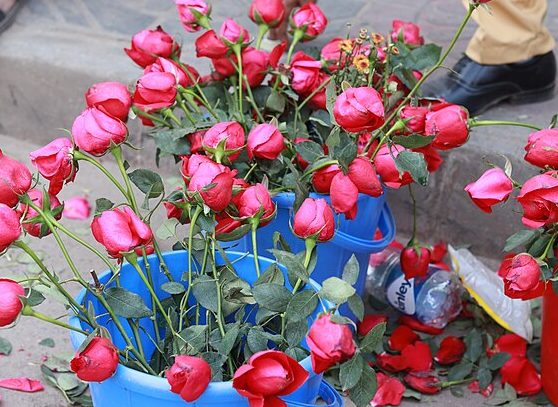As the warm, humid summer is replaced by crisp air and leaves transform into red, orange and yellow, we recognize that autumn has once again arrived. Autumn has long been celebrated as a season of beautiful landscapes, coziness and transformation. However, in recent years, the popularization of the so-called “fall aesthetic,” including the renowned Pumpkin Spice Latte, has created this wholesome ambience. Instead, society has commodified the season.
Driven by consumerism, big corporate companies utilize autumn to profit by heavily marketing products that represent fall. However, this profiting has inflated over the years, curating a flawed system where we have become susceptible towards advertising.
The most infamous example of fall-themed marketing is the Pumpkin Spice Latte from Starbucks. Launched in 2003, the popularity of the flavor has since surged to the point where grocery shops and supermarkets have started selling pumpkin spice flavored gum, crackers and yogurt.
The pumpkin spice flavor has created a phenomenon in which celebrating fall no longer includes enjoying pumpkin desserts as a commemoration of the season, but has now been minimized to the artificial flavor that plagues every food and beverage item. Fall has become a “brand.” Consuming pumpkin spice products has become more significant than actually appreciating the season, and we have fallen into this trap. The commercialization of this flavor leads to us associating the change of the season with a product rather than valuing the transition.
The fall “trends” have also infiltrated fashion and the home decor industry. “Christian Girl Autumn,” which was initially used to criticize influencers who obsess over fall, has become an annual sensation in which influencers glamorize every aspect of fall for viewership and profit. Many of us walk around dressed in autumn-themed clothing, which causes the misconception that it is necessary to dress in clothes befitting for fall to acknowledge the season. The spike in manufacturing a great number of clothing to promote the fall fashion catalog leads to unused pieces simply being thrown away by the end of the season, further perpetuating the already harmful system of fast fashion.
Although appreciating desserts, new outfits and home decorations can serve as a commemoration to the season, the commodification of autumn becomes inauthentic when people only value one way to appreciate fall. We as a society have begun purchasing products that are seemingly relevant to the season rather than participating in simple activities such as hiking and having family gatherings to truly celebrate the beauty of the changing nature.
Commodification also leads to issues of environmental sustainability. Decorations and goods are mass-produced and mostly cannot be reused, causing waste. Participating in autumn consumerism contradicts valuing the changing season as it encourages society to be wasteful.
Ultimately, while engaging in the “fall aesthetic,” such as grabbing a Pumpkin Spice Latte, can be fun during the season, it is essential to recognize that the commercialization of autumn serves as a detriment to our society. Let’s not lose sight of the true meaning of the season.




